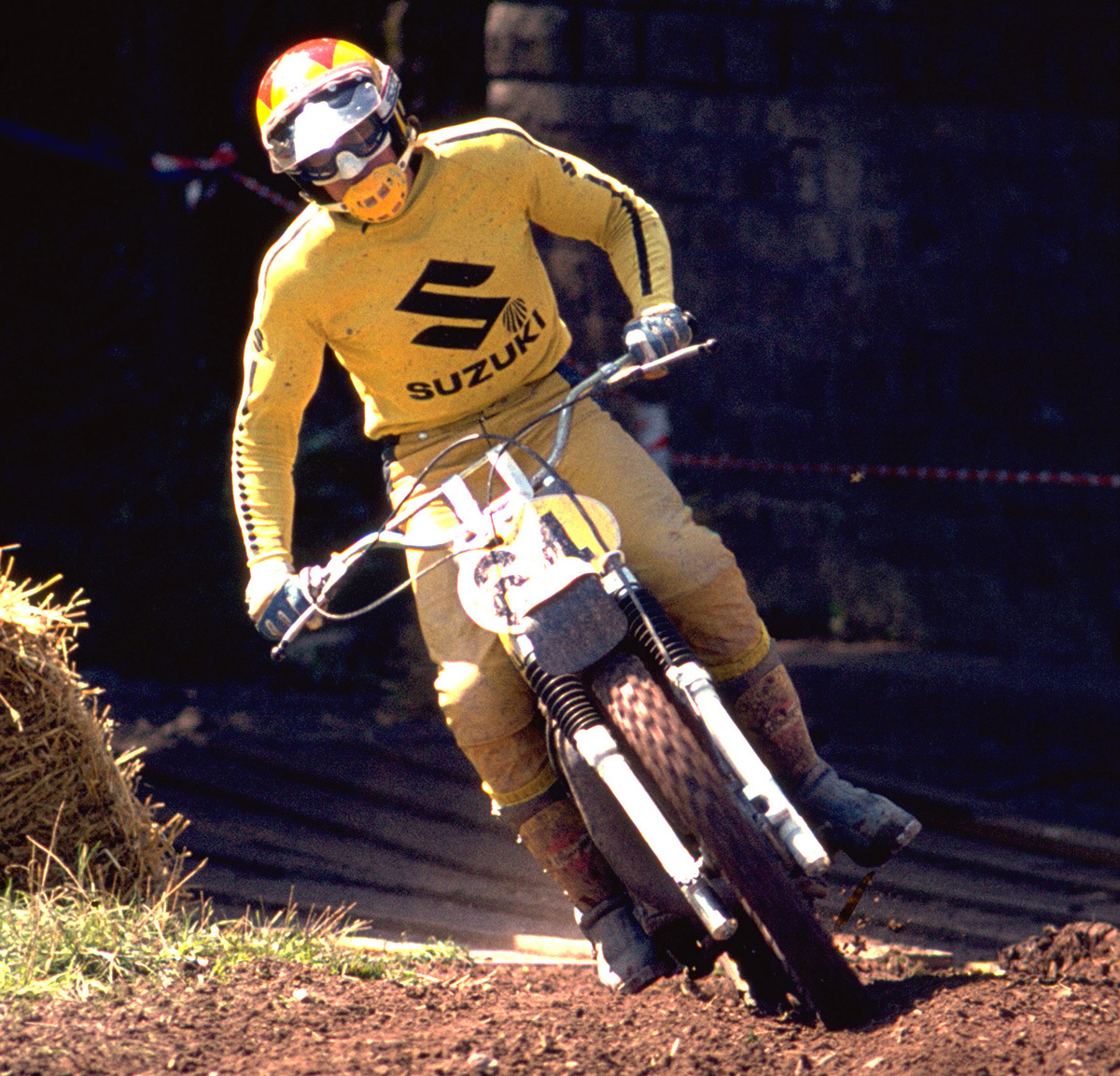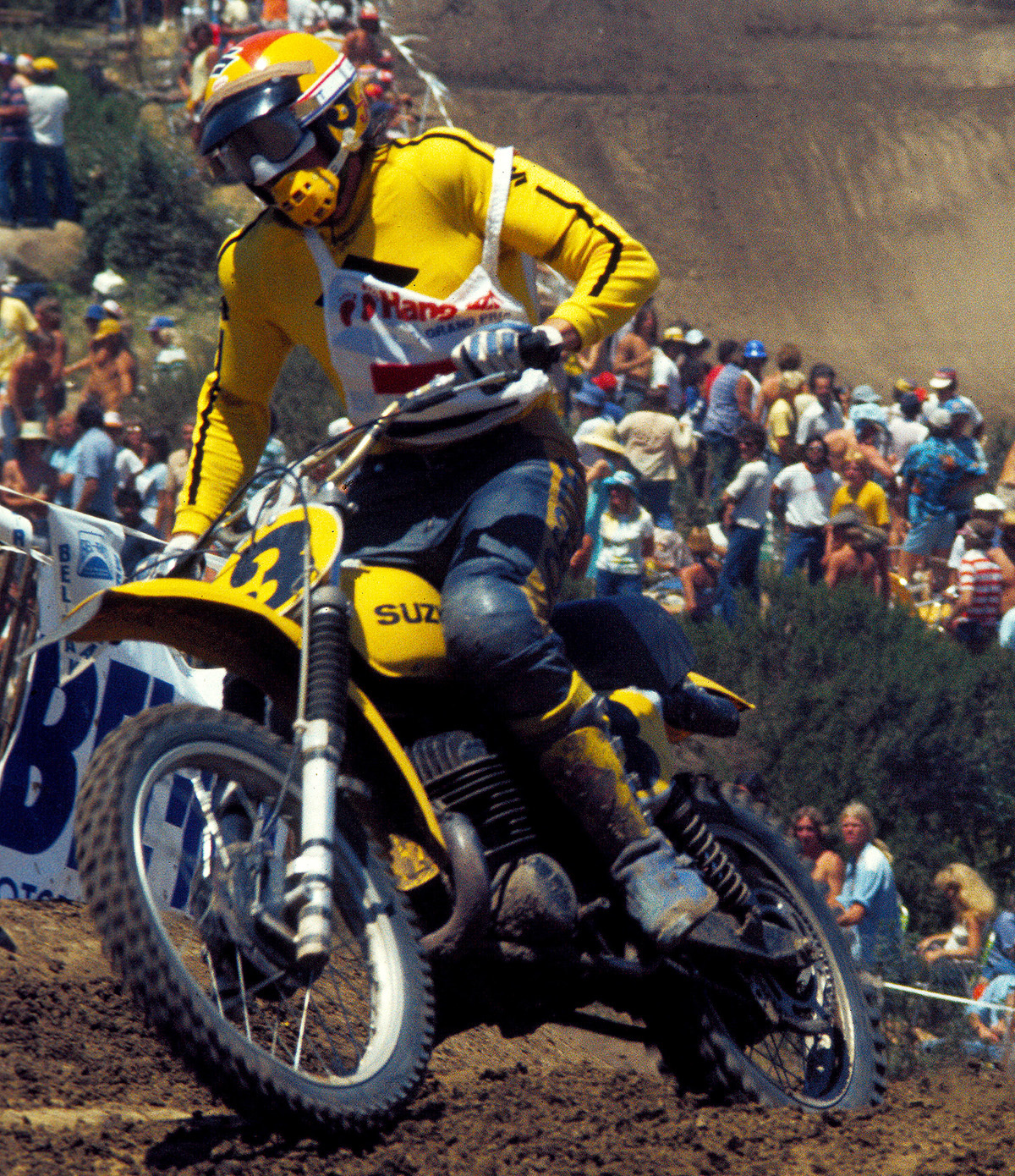Remember the Flying Dentist
 Thursday, December 20, 2018 at 9:09AM
Thursday, December 20, 2018 at 9:09AM Gerrit Wolsink interview
Posted on December 20, 2018
Nobody had ever hooked into the Carlsbad circuit in Southern California like Dutchman Gerrit Wolsink. With four USGP wins around the rock hard Carlsbad circuit no single man had dominated at the United States Grand Prix like the Dutchman.
Wolsink arrived on the Grand Prix scene around the same time as legends Roger De Coster and Heikki Mikkola, and despite never reaching for the FIM gold medal like his two rivals the flying Dutchman did win 13 GP overalls, placing him 16th in the all-time winners list for 500cc machines, every man ahead of him had at least one World Motocross championship to his name, while behind him came Brad Lackey, Bengt Aberg, Andrea Bartolini, Shayne King and Graham Noyce, all former World 500cc champions.
Wolsink would not retire disappointed, the fact he had raced side by side with the likes of De Coster and Mikkola was proof enough he belonged in amongst the legends. Wolsink finished near the top of the World 500cc championship enough times to smell the taste of championship glory, and in his homeland is still considered one of the most important people in the sport of Motocross.
He was known as the flying dentist, raised in the socially warm country of Holland in Europe Gerrit Wolsink became one of the most exciting riders of his era. He spilt his blood in an era which saw seeing the Motocross powers turning to America. At a time when the Europeans were still the best in the World Wolsink was one of the riders on the front line against the every improving Americans.
Who will ever forget the knee dragging shot of Wolsink at his beloved Carlsbad, or the shots of him pushing his more illustrious team-mate Roger De Coster around the tough circuits of Europe? Going two 45-minute motos and still looking sharp at the end.
"For sure, back in the mid-70's I was as quick as anyone. Because I rode for Suzuki I knew I had the best bikes, and my speed was always good, didn't matter if it was sand, rock-hard or whatever."
America was more than likely the most interesting stop for Wolsink, girls, sun and a place called Carlsbad fitted into his plans. He might have been the quiet Dutchman, but on the treacherous Carlsbad layout the Dutch dentist let it rip.
"I would spent three or four weeks in America in the summer because we had the USGP then a month later the Canadian Grand Prix. In the winter I would spent three months in America, I did that for six-years in a row, and I loved it. I hadn't been back for a long time, I got to go back for the Las Vegas Supercross, which was interesting."
"In 1976 I was blocked by a rider for two heats for the complete race, the tracks were very dusty in those days, at the old track at Ettelbrook, I passed this guy twice and he crashed into me. I never got angry, but he cost me the World championship that year. We had a rule that we didn't get involved in the fights for the championship, this guy just went out to stop me being World champion, and I’ll never forget what happen."
"I talked to Honda in America, but the AMA locked up that the European riders couldn't go to America and rule. Jimmy Weinart was behind that. They were scared that if too many European riders went to America that we could stop them making money. I really was a long way along with Honda to race in America in 1975 or something like that. Then they came back to me and told me the AMA didn't want anyone from Europe racing there anymore, only the guys who were already involved, guys like Pierre Karsmakers. I didn't care I had a good deal with Suzuki in the Grand Prix, and to be honest Europe was the top level then, we were the best riders in the World. The money in America was getting better back then though, although Europe was also good back then."

While Wolsink dominated the USGP winning in 1974/5/6 and 1979 the Dutchman also suffered losses at the Carlsbad circuit. Even in the depth of his career he lost out to the Finnish ironman Mikkola, and again to two young Americans Chuck Sun and Marty Moates.
"Carlsbad was a really interesting place, you knew you were in America, and the American riders didn't ride with the same discipline as the Europeans, they didn't mind trying stuff. I remember back in Carlsbad in 1981, Roger De Coster was team manager for the Honda team, and I was on a semi-factory team. Roger asked me if I would like to race the USGP for the factory team over in America, and I remember in the first heat I started too late, and I got second and Chuck Sun won the USGP, I finished second. That really upset me, I mean to win the USGP was normal for me, and here I was riding for the factory Honda team and I couldn't win it. I just got a bad start in both motos and in the second heat I crashed in the start. The American riders were so wild, in Europe we rode so smooth, and those guys were stop and go, and we were more technical, always thinking. You could out trick the Americans, they were not that smart back then. We saw guys like Hannah and Smith improving, and once those guy's improved they were just too good for us."
While Woslink watched and wondered if the Europeans could duplicate the improvement of the Americans he also looked at ways to bring the new breed of American riders to Europe. It was at the Amsterdam stadium in early 1980 that Wolsink was part of history, bringing the first ever Supercross race to Europe. While everyone looks at Bercy as the threshold of European Supercross races it was in fact an event which included names such as Broc Glover and Mike Bell.
"I remember after Ricky Johnson won the USGPs and he came to me and was saying he was nearly as good as me, now RJ was a hero for me, although he was younger he rode the Supercross races I promoted in Europe, and he was all show. Ricky was such a class guy, and one night we were sitting around and he said he won a GP at Carlsbad and he was nearly as good as Wolsink, which meant a lot to me."
As good as Wolsink was, battling the best in the World, and on the odd occasion winning, the Dutchman never looked at himself as anything but an average rider.
"You don't realise how good you were, but now I see how difficult it was for the guy's I sometimes work with, how hard it is for them, I realise how good I was, and how good guys like De Coster were. Still I worked hard to get to the top of Grand Prix racing, we all did, it was 100% commitment, with not the same payback they have now, maybe that is also a problem, we did it more for the passion of winning, than for the money, sure the money was important, but times have changed, it is so easy now for a young rider to make a living from Motocross."

And as for the young riders of today, Wolsink doesn’t see them putting in the effort and time to make it. They want it now, while riders from the 1970s took the hard route, and it paid off.
"I think the youngest riders don't take the time to get to the top, they want to get to the top quickly, too quickly. If they put more thought into racing, how to prepare, how to get into the position of being at the top maybe we wouldn't see so many accidents and rider injuries. Look at what happened in France, they had so much help with their young riders, with Jacky Vimond helping out and Boneface working with the young riders, but that has also stopped, the French are not bringing in riders like they used to. Australia obviously are doing something, we in Holland have tried several times, but it does not always work out. They tried it in Italy back in the early 1990's, but again I'm not sure if the effort there anymore."
After retirement, Wolsink got into promoting and even worked with current MXGP promoter, Giuseppe Luongo.
"I was 35-years-old and I had lost interest, I had injuries, I was a full-time dentist, so I just got out, stood on the side, although I am very involved now. I did some promotions, ran some Supercross races, the first one in Europe that was in Amsterdam, back in the early 1980. I also worked with Giuseppe Luongo on his Masters series, rode the ISDE, then I was in the side again before I was the clerk of the course at the 1993 International Six Day Enduro in Assen, Holland, that was terrible, we had so much rain, the routes were terrible, so much politics. The FIM asked me to be in the Motocross commission, I always said no."
One of the very good Grand Prix riders of the 1970s, and still often seen at a GP event, the Dutch dentist will always be remembered for his domination of the American and GP riders in the burning heat of southern California and around the Carlsbad dust bowl.













Reader Comments